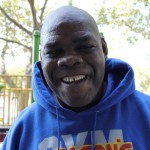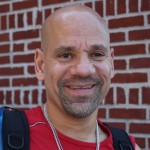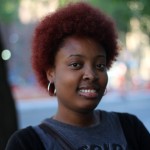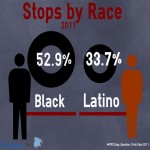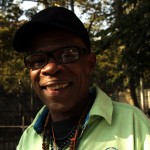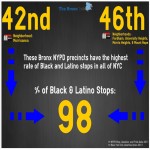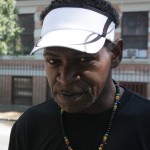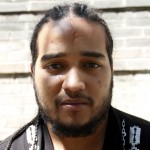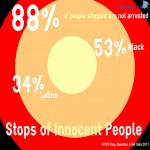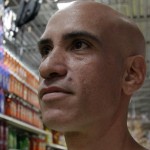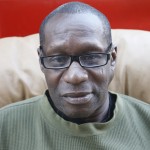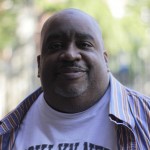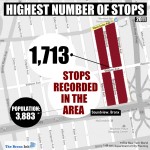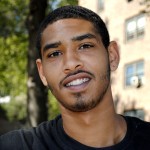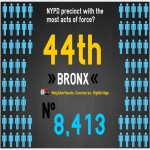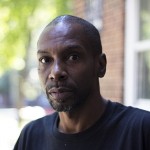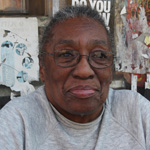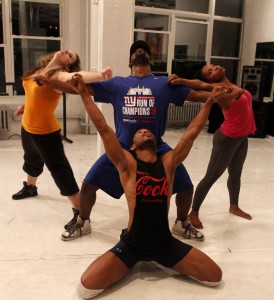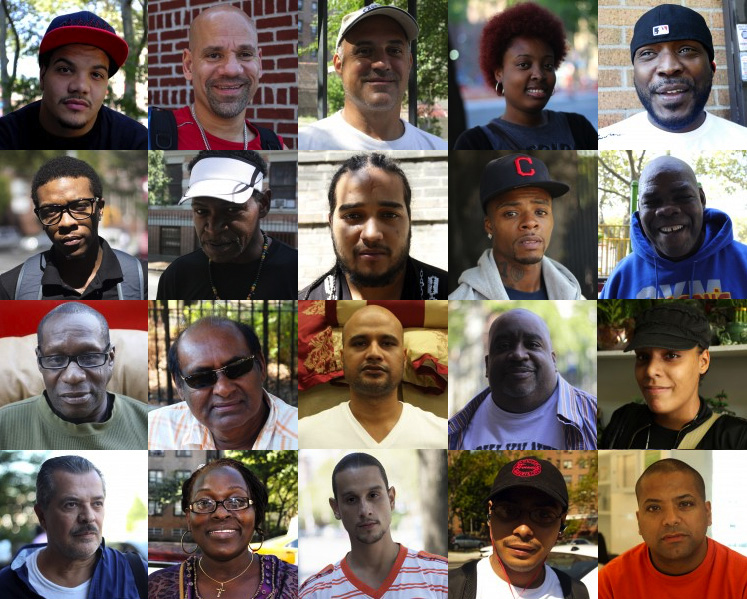 Tension between Bronx residents and police have been smoldering in recent weeks, in the wake of police killings of two unarmed young men.
Tension between Bronx residents and police have been smoldering in recent weeks, in the wake of police killings of two unarmed young men.
Recent protests have followed a year of public outcry over reports that city police have disproportionately stopped and frisked Black and Latino young men, particularly those in the South Bronx, based on little more than police suspicion. Most recently, a five-borough protest spurred by residents took place last Thursday.
On Wednesday, Sept. 13, the Bronx Ink staff decided to find out if Bronx residents thought the stop-and-frisk tactics might in any way be contributing to the growing unrest. Reporters scoured 12 community districts and collected the stories of 33 people, ranging from the ages of 19 to 72. Of those surveyed, 43 percent were Black, 30 percent Hispanic, 15 percent White, 9 percent South Asian, and 3 percent Asian. Six were women, 27 were men. Occupations ranged from student to dishwasher to paralegal. The overall population in the Bronx is 30.1 percent Black, 53.5 percent Hispanic, 10.9 percent White, and 3.2 percent Asian.
Police argue that the stop and frisk policy has resulted in removing dangerous criminals from the street. But a majority of men interviewed complained about being stopped multiple times, even though weapons were never found. Data released by the New York Police Department last year showed that more than 400 stops occurred in the Hunts Point section of the Bronx last year, resulting in only 10 confiscated guns. Most residents surveyed said they felt they were victims of profiling based on their race. Police data showed that young Black men represent 25.6 percent of the NYPD stops but only 1.9 percent of the city’s population. The same goes for young Latino men, who make up 16 percent of the NYPD’s stops but only 2.8 percent of the city’s population.
Some of the Bronx residents’ memories were fresh, and raw. Louis Soltren said he was sitting outside his Mott Haven apartment building one evening, dressed in a suit, drinking a Gatorade, taking a rest in the open air after a long day of work. That’s when a police officer approached him.
“I pulled out my ID,” Soltren remembered. “The guy actually refused to see my ID. Instead of treating me like a human being, he treated me like an animal.”
The officer ordered Soltren to take off his shoes and place his hands against the wall of his apartment building.
“I look way different than what certain drug dealers look like,” said Soltren, a 31-year-old Spanish and Italian resident of the Bronx. “I still fall in that category. The way I see it is because of my Hispanic race.”
The New York Civil Liberties Union estimates that police stopped on average about 1,900 people per day in 2011. The policy allows an officer to stop a person for a variety reasons, including walking suspiciously or having a suspicious bulge. The data shows that 88 percent of those stopped were not charged with anything.
Police records show that in the Mott Haven section of the Bronx, where Soltren has lived for 24 years, officers stopped and frisked residents 17,690 times – the fourth highest number in New York City.
Over half of the survey participants said they had been stopped. One-third of them admitted it happened more than once.
“One-hundred-one times I have been stopped by cops,” said Joys Reid, 53, a life-long Hunts Point resident, standing across the street from his apartment on Hoe avenue. “Everyday we get picked up for nothing.”
Of those interviewed, 77 percent said they opposed the practice.
“Stop and frisk I don’t think is going to stop anything because it hasn’t,” said Terrence Wilkerson, 36, a Highbridge resident for 30 years.
“Stop and frisk is borderline racism,” Wilkerson added.
The Bronx Ink poll reflects a greater trend among Black and Hispanic residents. According to a Quinnipiac University survey, 69 percent of Black voters and 53 percent of Hispanic voters disapproved of stop and frisk. In New York City overall, registered voters are split on the policy: 50 percent against, 45 percent for, and 5 percent undecided.
Only five of the people we spoke to supported the policy, two of whom were Hispanic.“I think it’s great. It’s extremely important,” said Robert Flores, 45, a Fordham resident. “I know a lot of people are against it but I feel that it needs to happen. Within this community, we are the only people robbing each other.”
Overwhelmingly, those surveyed said more positive police involvement in their community would prevent unnecessary stops. “If they see the same people everyday, they should know the community,” Peter Lorenzi, 19, a criminal justice major at Berkeley College said. “They should know people around them.”
Click on photos to hear their stories.
Additional reporting by Ana Ionova, Andrew Freedman, Annaliese Wiederspahn, Coleen Jose, Jan Hendrik Hinzel, Jika González, Kenny Suleimanagich, Margaret Badore, Natasha Lindstrom, Sadef A. Kully, Selase Kove-Seyram, Sonia Paul, Valentine Pasquesoone, Vidur Malik and Yi Du.


